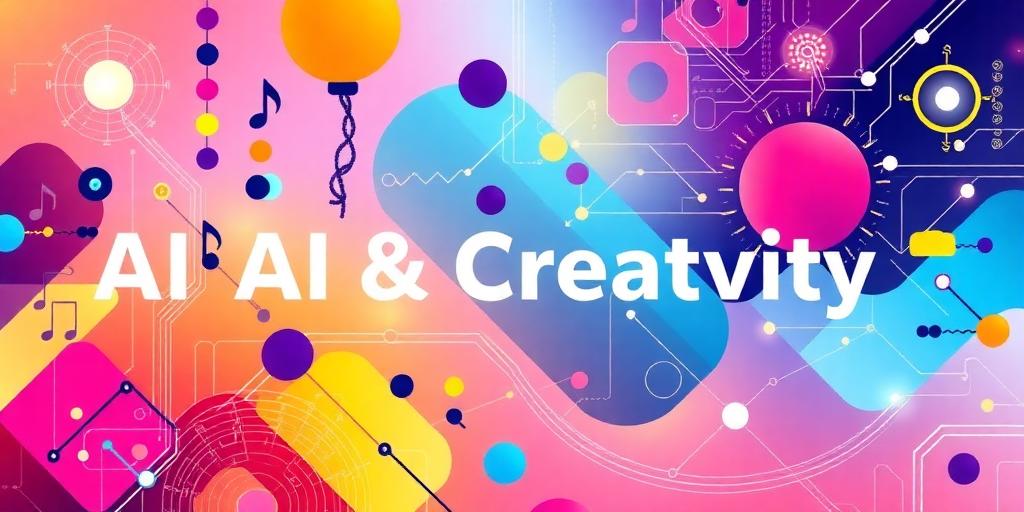Can AI Truly Be Creative? Exploring Art, Music, and Writing
The question of whether artificial intelligence can genuinely be creative is a subject of ongoing debate. While AI has demonstrated remarkable abilities in generating art, composing music, and writing text, the core of creativity remains a complex and multifaceted concept. This article explores the capabilities of AI in these domains, while also considering the philosophical and practical limitations that currently exist.
AI in Art: Mimicry or Innovation?
AI algorithms, particularly those based on deep learning, have shown a capacity to produce visually stunning artwork. These algorithms are trained on vast datasets of existing art, learning patterns, styles, and techniques. By analyzing this data, AI can generate new images that mimic or blend these learned characteristics.
- Generative Adversarial Networks (GANs): GANs consist of two neural networks, a generator, and a discriminator. The generator creates new images, while the discriminator evaluates their authenticity. Through continuous feedback, the generator improves its output, producing increasingly realistic and aesthetically pleasing art.
- Style Transfer: AI can transfer the style of one image to another, allowing users to transform photographs into the style of famous painters like Van Gogh or Monet. This showcases AI's ability to understand and replicate artistic styles.
However, the question remains: Is this genuine creativity, or simply advanced mimicry? Critics argue that AI lacks the emotional depth, intentionality, and contextual understanding that drive human artistic creation. AI art is often seen as derivative, repurposing existing styles rather than originating entirely new ones.
AI in Music: Composition and Performance
AI has also made significant strides in the field of music composition. AI algorithms can generate melodies, harmonies, and rhythms, often producing music that is both technically proficient and aesthetically pleasing. These algorithms can be trained on diverse musical styles, allowing them to create music in various genres.
- AI-Generated Melodies: AI can create original melodies based on learned musical patterns. These melodies can be further developed into full compositions by human musicians or AI algorithms.
- Automated Composition Tools: Several software tools use AI to assist musicians in composing music. These tools can generate chord progressions, suggest harmonies, and even create entire arrangements.
While AI can produce music that is technically sound, it often lacks the emotional resonance and originality that characterize human compositions. Music is deeply tied to human experiences, emotions, and cultural contexts. AI, lacking these subjective experiences, may struggle to create music that truly connects with listeners on an emotional level.
AI in Writing: Content Generation and Storytelling
In the realm of writing, AI has proven capable of generating coherent and grammatically correct text. AI-powered writing tools can produce articles, blog posts, and even creative stories. These tools use natural language processing (NLP) techniques to understand and generate human-like text.
- Content Generation: AI can automatically generate articles on various topics, providing a valuable tool for content creators and marketers. These articles are often well-structured and informative, though they may lack the depth and originality of human-written content.
- Creative Writing: AI has been used to generate poetry, short stories, and even novels. While these AI-generated works can be impressive, they often lack the emotional depth, thematic complexity, and nuanced character development that characterize human literature.
Critics argue that AI-generated writing tends to be formulaic and predictable. AI algorithms rely on patterns and structures learned from existing text, which can lead to a lack of originality and creativity. Human writers bring their unique perspectives, experiences, and insights to their work, resulting in writing that is both engaging and thought-provoking.
The Limitations of AI Creativity
While AI has made remarkable progress in art, music, and writing, several limitations hinder its ability to be truly creative:
- Lack of Consciousness: AI lacks subjective consciousness, self-awareness, and emotional understanding. Creativity is often driven by personal experiences, emotions, and insights, which AI cannot replicate.
- Dependence on Data: AI algorithms are trained on existing data, which limits their ability to generate truly novel and original content. AI can only create something new by repurposing or combining elements from its training data.
- Absence of Intentionality: AI lacks intentionality or purpose. Human creators often have a specific goal or message in mind when creating art, music, or writing. AI, on the other hand, simply generates output based on its learned patterns.
- Limited Contextual Understanding: AI struggles to understand the broader cultural, social, and historical contexts that inform human creativity. This can lead to AI-generated content that is tonally inappropriate or culturally insensitive.
The Future of AI and Creativity
Despite its current limitations, AI has the potential to play an increasingly important role in creative fields. AI can serve as a valuable tool for artists, musicians, and writers, augmenting their abilities and helping them explore new creative possibilities. For example, AI could:
- **Assist in brainstorming and idea generation.
- Automate repetitive tasks, freeing up human creators to focus on more creative aspects.
- Provide new tools and techniques for artistic expression.
- Personalize creative experiences for individual users.
In conclusion, while AI has demonstrated impressive capabilities in generating art, music, and writing, it is not yet truly creative in the same way as humans. AI lacks the consciousness, emotional depth, and intentionality that drive human creativity. However, AI can still be a valuable tool for human creators, augmenting their abilities and opening up new avenues for creative expression. The future of AI and creativity will likely involve a collaborative partnership between humans and machines, where AI assists in the creative process while humans provide the vision, emotional depth, and contextual understanding that truly define creativity.









